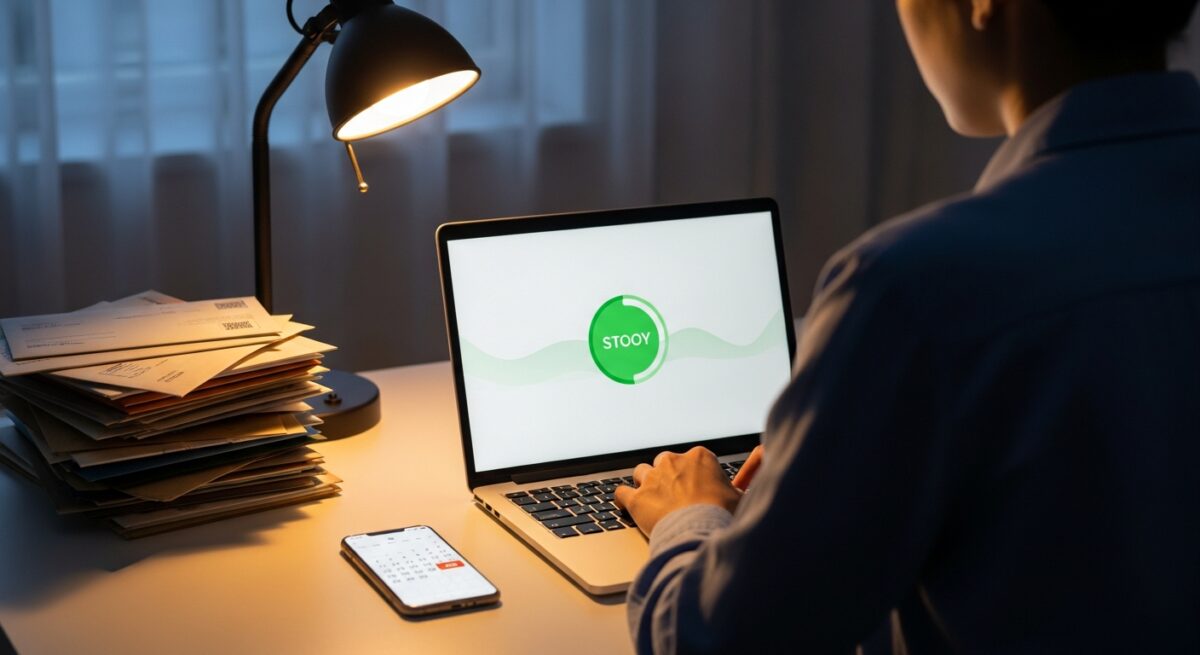The Trusted Choice for Cash Loans
Request Your Cash Advance or Personal Loan Now
The Trusted Choice for Cash Loans
Submit your information today!
Get lender-approved in as fast as 5 min!
Receive a decision as soon as the next business day!
Fast Funding
Get money as soon as the next business day

Personal Loans Collateral: How It Influences Interest Rates
Personal loans are a popular financial product that allows individuals to borrow money for various purposes, such as consolidating debt, financing home improvements, or covering unexpected expenses. One critical aspect of personal loans is the concept of collateral. Personal loans collateral refers to an asset that a borrower pledges to a lender as security for the repayment of the loan. In the context of personal loans, collateral can significantly influence the terms and conditions offered by the lender, including interest rates and loan amounts.
When a personal loan is secured by collateral, it is known as a secured personal loan. The collateral serves as a form of protection for the lender, reducing the risk associated with lending money. Common types of collateral for personal loans include real estate, vehicles, savings accounts, or other valuable assets. By offering collateral, borrowers may benefit from lower interest rates and higher loan amounts, as the lender has a tangible asset to recover in case of default.
Conversely, unsecured personal loans do not require any collateral. These loans are typically based on the borrower’s creditworthiness and financial history. While unsecured loans offer the advantage of not risking personal assets, they often come with higher interest rates and stricter eligibility criteria. This is because the lender assumes a greater risk without the assurance of collateral to recover the loan amount in the event of non-payment.
Understanding the role of personal loans collateral is crucial for borrowers when deciding between secured and unsecured loan options. By evaluating their financial situation and the potential risks involved, borrowers can make informed decisions that align with their financial goals. Whether opting for a secured loan with collateral or an unsecured loan, it is essential to carefully consider the terms and conditions to ensure they meet one’s financial needs and repayment capabilities.

The Role of Collateral in Securing Personal Loans
Collateral plays a pivotal role in the realm of personal loans, serving as a security measure for lenders. When borrowers pledge an asset as collateral, it provides assurance to the lender that the loan will be repaid, either through regular payments or by seizing the asset in case of default. This arrangement significantly reduces the risk for lenders, making them more inclined to offer loans with favorable terms. Personal loans collateral can include a variety of assets, such as real estate, vehicles, or savings accounts, each offering different levels of security and value.
The inclusion of collateral in personal loans often results in lower interest rates and more flexible repayment terms. This is because the risk to the lender is mitigated by the tangible asset backing the loan. Borrowers with less-than-perfect credit scores may find it easier to secure a loan when they can offer collateral, as it provides an additional layer of security for the lender. Thus, personal loans collateral not only facilitates access to credit but also enhances the borrowing terms for individuals who might otherwise face challenges in obtaining unsecured loans.
However, the use of collateral is not without its risks for the borrower. In the event of a default, the lender has the legal right to seize the asset used as collateral, which can lead to significant financial and personal loss. Therefore, it is crucial for borrowers to carefully assess their ability to meet loan obligations before pledging valuable assets. Understanding the implications of using personal loans collateral is essential for making informed financial decisions and avoiding potential pitfalls.
In conclusion, collateral serves as a critical component in the personal loan process, offering both advantages and risks. It provides a safety net for lenders, enabling them to extend credit more readily and on better terms. For borrowers, while it opens doors to more favorable loan conditions, it also necessitates a careful evaluation of one’s financial stability and repayment capacity. By weighing these factors, individuals can make prudent choices regarding the use of personal loans collateral, ensuring that their financial goals are met without undue risk.
Types of Collateral Commonly Used for Personal Loans
When considering personal loans collateral, it is essential to understand the various types of assets that can be used to secure such loans. Collateral serves as a form of security for lenders, ensuring that they can recover their funds in the event of a default. The most common types of collateral for personal loans include real estate, vehicles, savings accounts, and valuable personal property. Each type of collateral has its own set of advantages and considerations, making it crucial for borrowers to choose wisely based on their financial situation and the loan terms offered by the lender.
Real estate is often considered a highly reliable form of personal loans collateral due to its substantial value and stability. Borrowers can use their homes or other properties to secure a loan, potentially allowing them to access larger amounts of credit. However, it is important to note that using real estate as collateral carries significant risk, as failure to repay the loan could result in the loss of the property. Therefore, borrowers should carefully assess their ability to meet loan obligations before opting for this type of collateral.
Vehicles are another popular choice for personal loans collateral, particularly for those who may not own real estate. Cars, motorcycles, and other vehicles can be used to secure a loan, with the vehicle’s title serving as the collateral. This option can be appealing due to the relatively quick and straightforward process of valuation and transfer of ownership. However, borrowers should be aware that defaulting on the loan could lead to repossession of the vehicle, which could significantly impact their daily life and mobility.
In addition to tangible assets, financial instruments such as savings accounts and certificates of deposit can also serve as personal loans collateral. These options are particularly attractive for individuals who prefer not to risk losing physical property. By pledging a savings account, borrowers can often secure favorable loan terms due to the low risk involved for the lender. Nonetheless, it is important for borrowers to ensure that they maintain sufficient funds in their accounts to avoid any potential financial strain during the loan repayment period.
Pros and Cons of Using Collateral for Personal Loans
Using collateral for personal loans can offer several advantages, making it an attractive option for borrowers seeking favorable loan terms. One of the primary benefits is the potential for lower interest rates. Lenders often view secured loans as less risky because the collateral provides a safety net in case of default. This reduced risk can translate into more competitive interest rates, ultimately lowering the overall cost of borrowing. Additionally, using personal loans collateral can increase the likelihood of loan approval, especially for individuals with less-than-perfect credit scores.
However, there are also significant drawbacks to consider when using collateral for personal loans. The most notable risk is the potential loss of the asset used as collateral. If a borrower fails to meet the repayment terms, the lender has the right to seize the collateral to recover the outstanding debt. This risk underscores the importance of ensuring that the loan terms are manageable and that the borrower has a reliable repayment plan in place. Furthermore, the process of securing a loan with collateral can be more complex and time-consuming compared to unsecured loans, as it involves asset valuation and additional documentation.
Another advantage of using personal loans collateral is the possibility of borrowing larger amounts. Since the loan is secured by an asset, lenders may be more willing to extend higher loan limits, providing borrowers with access to more substantial funds. This can be particularly beneficial for individuals needing significant capital for large expenses, such as home renovations or debt consolidation. Moreover, the flexibility in loan terms, such as extended repayment periods, can make managing monthly payments more feasible for borrowers. In contrast, the use of collateral can limit a borrower’s financial flexibility.
Once an asset is pledged as collateral, it cannot be used for other financial purposes until the loan is fully repaid. This restriction can be a disadvantage for individuals who may need to leverage their assets for other opportunities or emergencies. Additionally, the requirement to use collateral can exclude individuals who do not possess valuable assets, thereby limiting their access to secured personal loans. Thus, while using personal loans collateral can offer several benefits, it is crucial for borrowers to weigh these against the potential risks and limitations.
How Collateral Affects Your Personal Loan Terms
Collateral plays a pivotal role in determining the terms of a personal loan. When a borrower offers personal loans collateral, it provides the lender with a form of security, thereby reducing the perceived risk associated with lending. This security can lead to more favorable loan terms, such as lower interest rates and higher borrowing limits. By understanding how collateral impacts loan conditions, borrowers can make informed decisions that align with their financial goals.
The presence of collateral often results in lower interest rates for personal loans. Lenders are more inclined to offer competitive rates when they have an asset to fall back on in case of default. This is because the risk of financial loss is mitigated by the collateral, allowing lenders to pass on the savings to the borrower. Consequently, individuals who provide personal loans collateral can benefit from reduced monthly payments, making the loan more affordable over its term.
In addition to influencing interest rates, collateral can also affect the loan amount a borrower is eligible to receive. With collateral in place, lenders may be willing to extend larger sums of money, as the risk of non-repayment is partially offset by the asset. This can be particularly advantageous for borrowers who require substantial funds for significant expenses, such as home renovations or debt consolidation. Thus, offering personal loans collateral can enhance borrowing capacity.
However, it is crucial for borrowers to carefully consider the implications of using collateral. While it can lead to better loan terms, the risk of losing the asset in the event of default is a significant consideration. Borrowers must ensure they have a robust repayment plan in place to safeguard their collateral. By weighing the benefits and risks, individuals can determine whether using personal loans collateral is the right choice for their financial situation.
Steps to Pledge Collateral for a Personal Loan
Pledging collateral for a personal loan involves a series of methodical steps designed to secure the loan with an asset of value. The process begins with identifying suitable personal loans collateral, which can include assets such as real estate, vehicles, or valuable personal property. It is crucial to ensure that the asset is free of any existing liens or encumbrances, as this can affect its eligibility as collateral. Once a suitable asset is identified, the borrower should gather all necessary documentation that proves ownership and the asset’s current market value. The next step involves approaching a lender who offers personal loans that accept collateral.
It is advisable to research and compare different lenders to find one that provides favorable terms and conditions. During this stage, the borrower will need to present the documentation of the collateral to the lender for evaluation. The lender will assess the asset’s value and determine its suitability as collateral, which will influence the loan amount and interest rate offered. This evaluation process is critical, as it ensures that the lender is adequately protected in the event of a default. Once the lender approves the collateral, the borrower will proceed to sign a loan agreement.
This agreement will outline the terms of the loan, including the repayment schedule, interest rate, and the conditions under which the collateral may be seized. It is imperative for the borrower to thoroughly review this agreement to understand their obligations and the potential risks involved. After signing, the collateral is officially pledged, and the borrower receives the loan funds, which can be used for various personal financial needs. Finally, maintaining timely repayments is essential to prevent the loss of the pledged collateral. Borrowers should adhere to the repayment schedule outlined in the loan agreement to avoid defaulting on the loan.
In the event of financial difficulties, it is advisable to communicate with the lender to explore possible solutions, such as restructuring the loan terms. By following these steps diligently, borrowers can effectively use personal loans collateral to secure the necessary funds while minimizing financial risks.
Risks Involved in Using Collateral for Personal Loans
When considering personal loans collateral, it is crucial to understand the inherent risks associated with using assets as security for a loan. Collateral serves as a lender’s assurance that the borrower will repay the loan, but it also places the borrower’s assets at risk. If the borrower defaults on the loan, the lender has the legal right to seize the collateral, which could include valuable assets such as a home or vehicle. This potential loss underscores the importance of carefully evaluating one’s financial situation before committing to a collateralized personal loan.
Another significant risk of using personal loans collateral is the possibility of over-leveraging one’s assets. Borrowers may be tempted to secure larger loans than necessary by using high-value collateral, which can lead to financial strain if the loan terms become unmanageable. Over-leveraging can result in a cycle of debt, where the borrower struggles to meet repayment obligations, ultimately risking the loss of the collateralized asset. It is essential for borrowers to assess their repayment capacity realistically and avoid the pitfalls of over-borrowing.
Furthermore, the value of the collateral can fluctuate over time, posing an additional risk to borrowers. Economic factors or market conditions can lead to a decrease in the asset’s value, potentially leaving the borrower with a loan that exceeds the worth of the collateral. This scenario can complicate the borrower’s financial situation, especially if they need to sell the asset to repay the loan. Borrowers should consider the stability and potential depreciation of their collateral before using it to secure a personal loan.
Lastly, using personal loans collateral can impact the borrower’s credit score if they default on the loan. A default not only results in the loss of the collateral but also negatively affects the borrower’s credit history, making it more challenging to secure future loans. This dual impact can have long-term financial repercussions, emphasizing the need for borrowers to maintain a disciplined approach to loan repayment. By understanding these risks, individuals can make informed decisions when considering collateral for personal loans.
Alternatives to Collateral-Based Personal Loans
When considering personal loans, borrowers often encounter the requirement of providing collateral. However, not everyone possesses assets to pledge, prompting the need for alternatives to collateral-based personal loans. One viable option is unsecured personal loans, which do not necessitate any form of collateral. These loans are typically granted based on the borrower’s creditworthiness, income, and financial history, offering a feasible solution for those lacking tangible assets. Another alternative is peer-to-peer lending platforms, which have gained popularity in recent years.
These platforms connect borrowers directly with individual lenders, bypassing traditional financial institutions. The absence of collateral requirements in many peer-to-peer loans makes them an attractive option for individuals seeking personal loans without collateral. However, it is crucial for borrowers to thoroughly assess the terms and interest rates, as they can vary significantly across different platforms. Credit unions also present a compelling alternative for those in search of personal loans without collateral. Unlike traditional banks, credit unions are member-owned and often provide more favorable loan terms and interest rates.
They may offer unsecured personal loans to members with good credit histories, making them a viable option for borrowers who prefer not to pledge collateral. Additionally, credit unions often provide personalized service, which can be beneficial for borrowers seeking guidance throughout the loan process. Lastly, borrowers may consider exploring personal lines of credit as an alternative to collateral-based personal loans. A personal line of credit functions similarly to a credit card, allowing borrowers to access funds up to a predetermined limit without the need for collateral. This option provides flexibility, as interest is only charged on the amount borrowed.
However, it is essential for borrowers to maintain a good credit score to qualify for favorable terms. By considering these alternatives, individuals can secure the necessary funds without the constraints of personal loans collateral.
Evaluating Your Assets: Choosing the Right Collateral
When considering personal loans collateral, it is crucial to evaluate your assets meticulously to determine the most suitable option. Collateral serves as a security measure for lenders, ensuring that they can recover their funds if the borrower defaults. Common types of collateral include real estate, vehicles, savings accounts, and valuable personal property. Each asset type carries its own set of advantages and risks, making it essential to assess their value and liquidity before making a decision.
Real estate is often considered a prime choice for personal loans collateral due to its substantial value and stability. However, using property as collateral can be risky if the borrower faces financial difficulties, potentially leading to foreclosure. On the other hand, vehicles, while generally lower in value compared to real estate, offer a more flexible option. They are easier to liquidate, providing lenders with a quicker means of recouping their losses, though they may depreciate over time.
Savings accounts and certificates of deposit (CDs) are also viable options for collateral. These financial assets are highly liquid and carry minimal risk of depreciation, making them attractive to both lenders and borrowers. However, pledging these assets may limit your financial flexibility, as they will be inaccessible until the loan is repaid. Therefore, it is important to weigh the benefits of using liquid assets against the potential constraints on your financial resources.
Ultimately, the choice of personal loans collateral should align with your financial goals and risk tolerance. It is advisable to consult with a financial advisor to understand the implications of using different types of collateral. By carefully evaluating your assets, you can make an informed decision that not only secures the loan but also safeguards your financial well-being. This strategic approach ensures that you select collateral that supports your borrowing needs while minimizing potential risks.
Legal Implications of Using Collateral for Personal Loans
When individuals opt to secure personal loans collateral, they must be acutely aware of the legal implications involved. Collateral serves as a security measure for lenders, ensuring that they have a claim to the borrower’s asset in the event of default. This legal agreement is binding and typically outlined in the loan contract, which specifies the terms under which the collateral can be seized. Borrowers should thoroughly understand these terms to avoid any potential legal disputes that may arise from misunderstandings or non-compliance with the contract.
The use of personal loans collateral introduces several legal responsibilities for the borrower. Primarily, the borrower must maintain ownership and the condition of the collateral throughout the loan term. Any damage or depreciation in value could affect the borrower’s ability to fulfill the collateral agreement, potentially leading to legal action from the lender. Additionally, borrowers must ensure that the collateral is free from any other claims or liens, as this could complicate the lender’s ability to seize the asset if necessary.
Furthermore, the legal implications extend to the lender’s rights in the event of a default. Lenders are legally entitled to repossess the collateral without court intervention, provided the borrower has defaulted according to the terms specified in the loan agreement. This process, known as self-help repossession, varies by jurisdiction, and borrowers should be aware of their rights and any state-specific regulations that may protect them from unlawful seizure. Understanding these legal nuances is crucial for both parties to ensure a fair and transparent lending process.
In conclusion, the legal implications of using personal loans collateral are significant and multifaceted. Borrowers must be diligent in understanding their obligations and the potential consequences of defaulting on their loan. Consulting with a legal advisor before entering into a collateral agreement can provide clarity and help mitigate risks. By doing so, borrowers can protect their assets and maintain a positive relationship with their lender, ensuring a smoother financial transaction.
At ExpressCash, we’re here to help guide you through the process and find the right financial solution for your specific situation.




